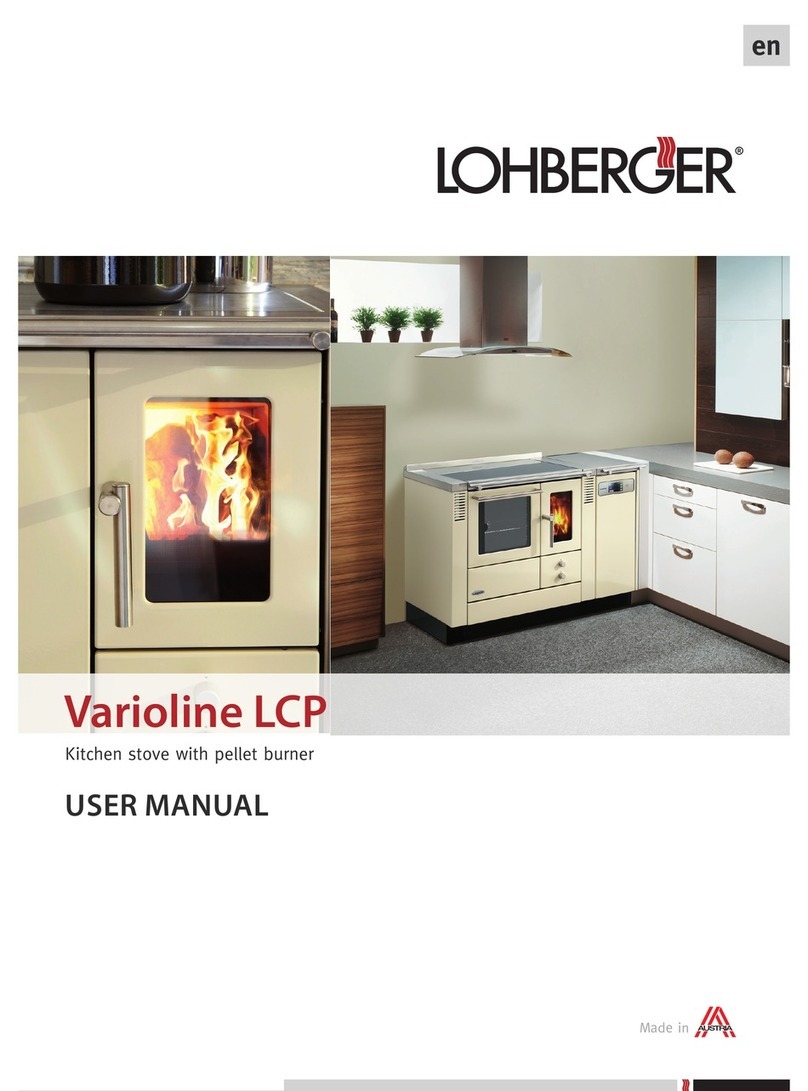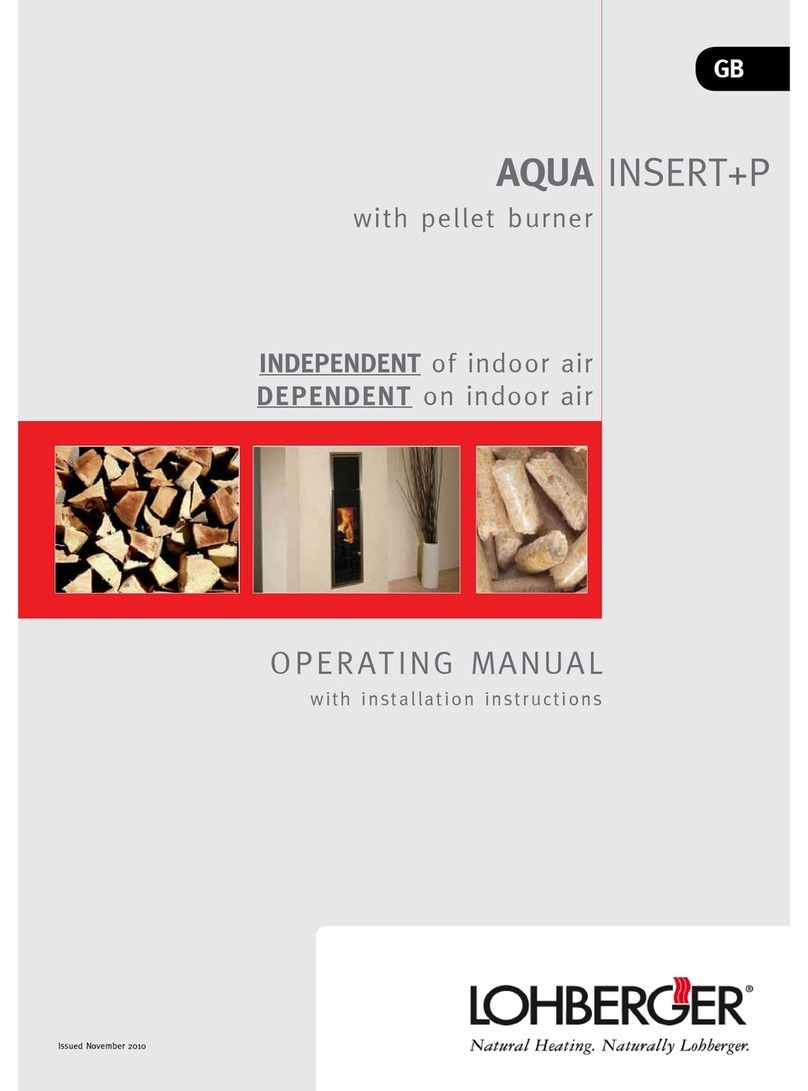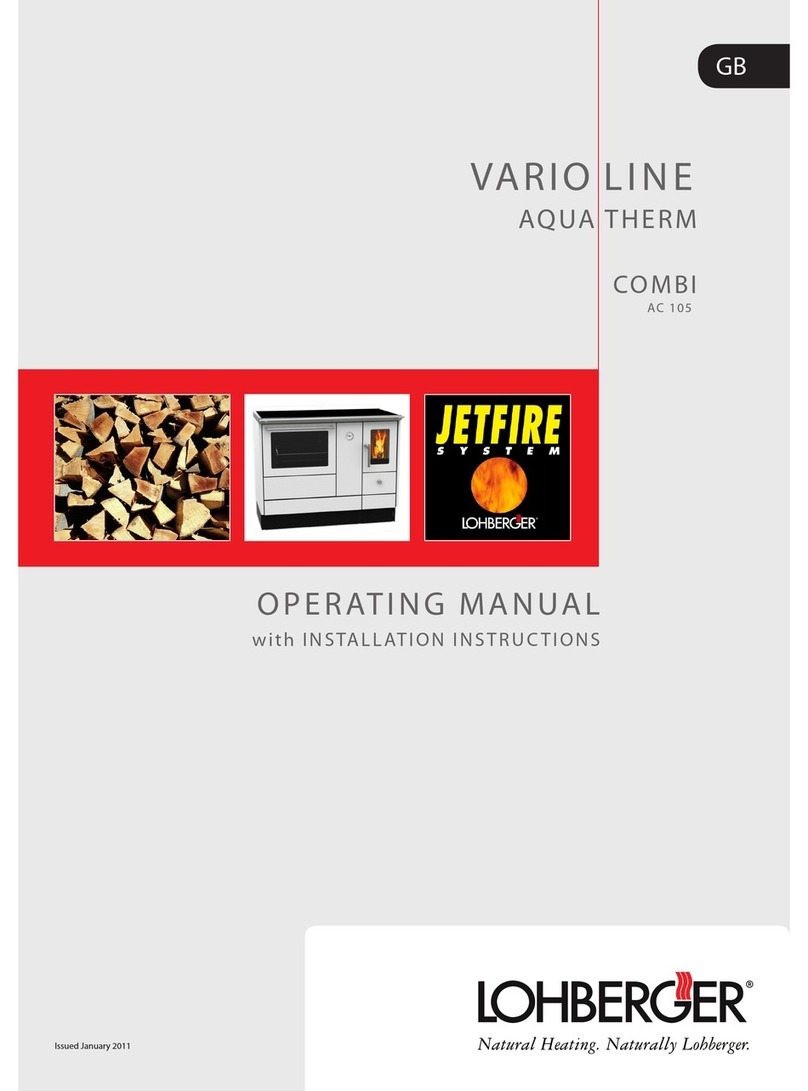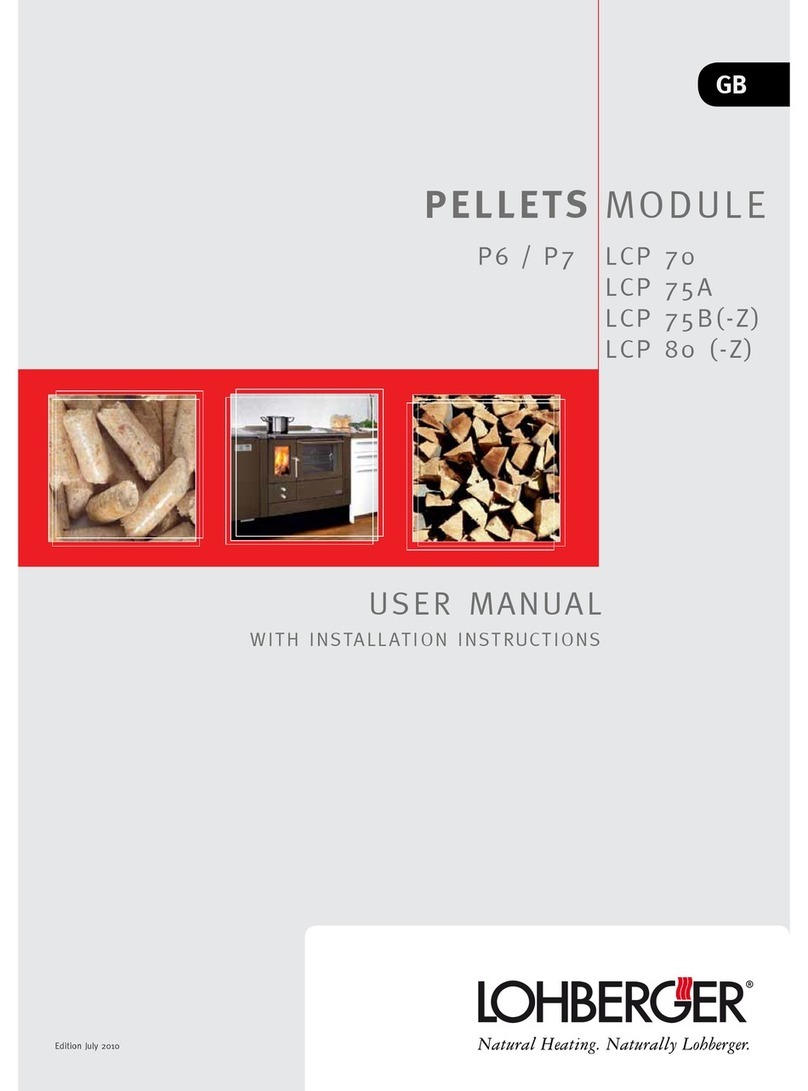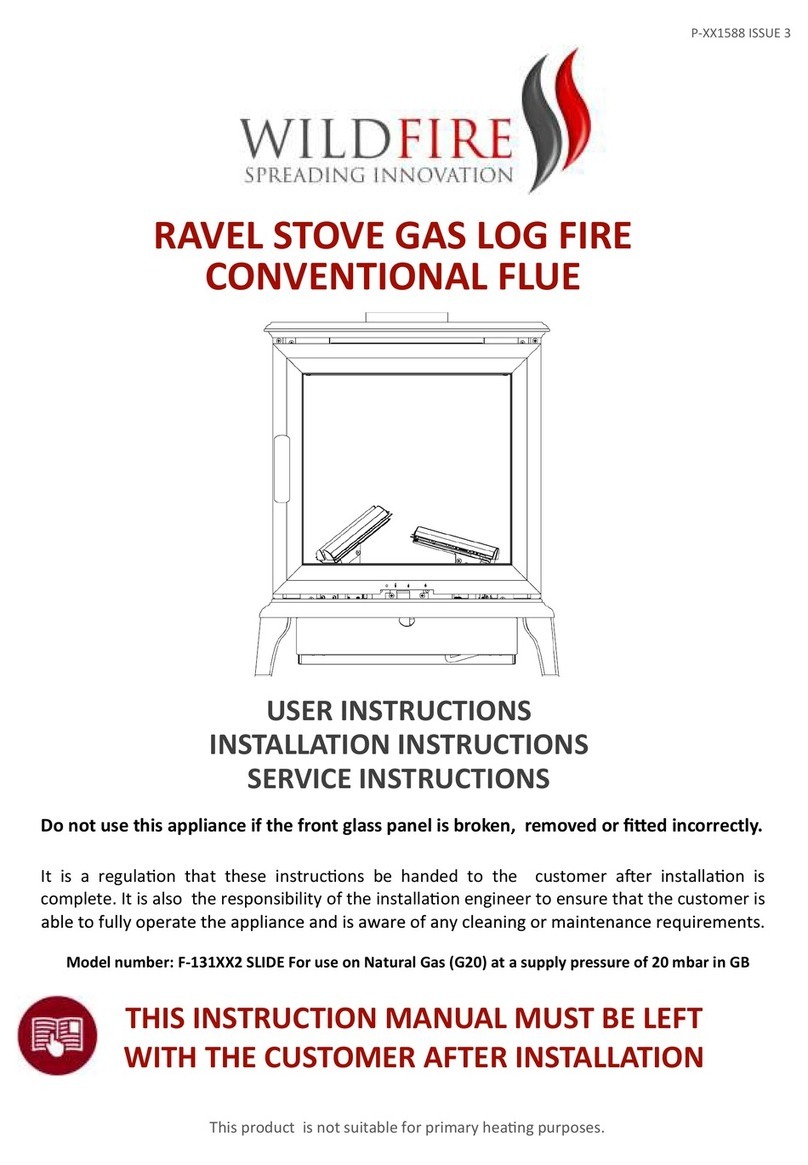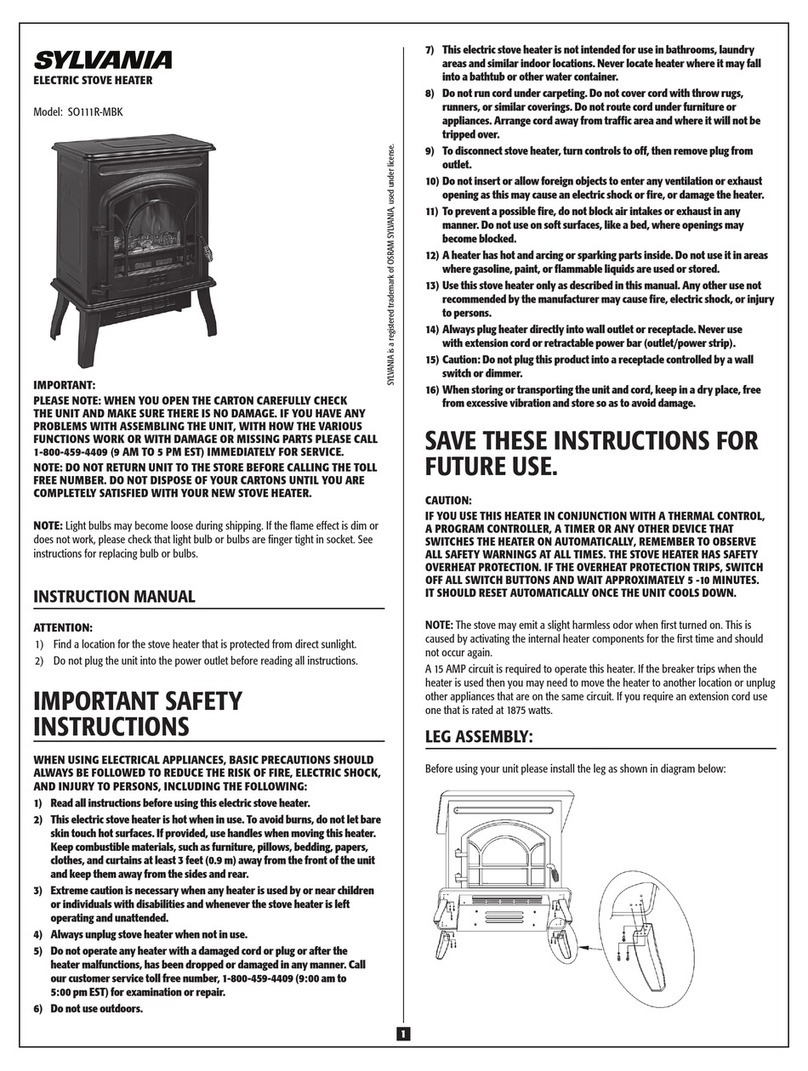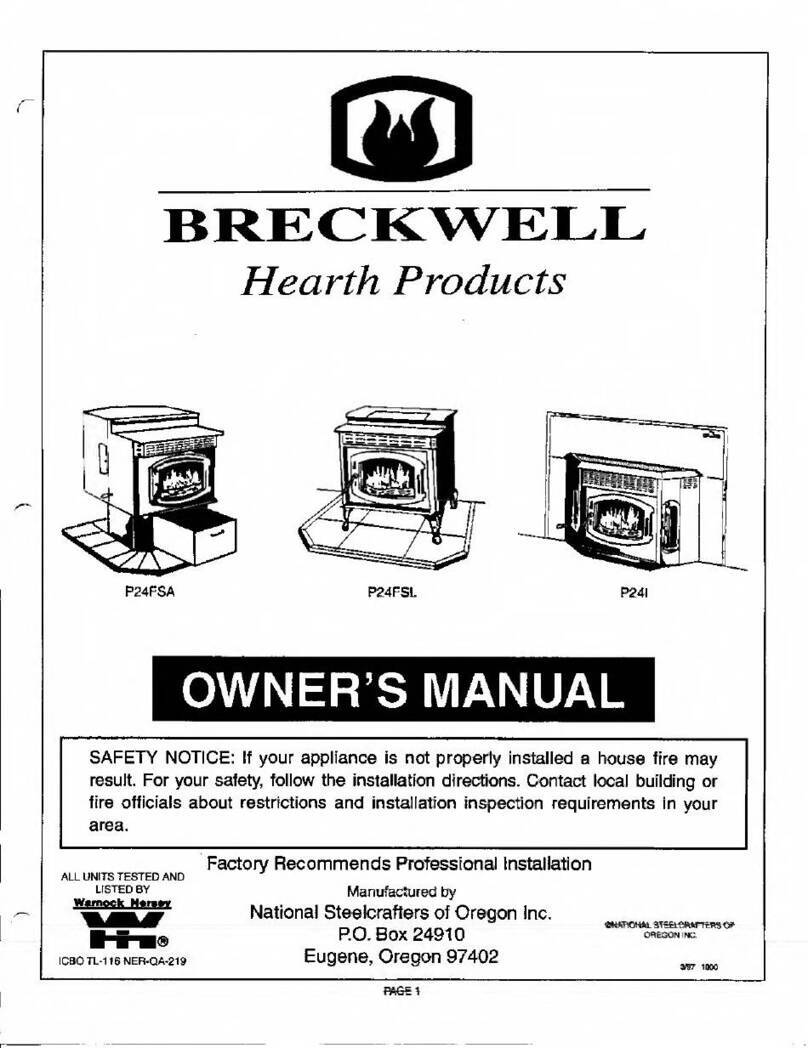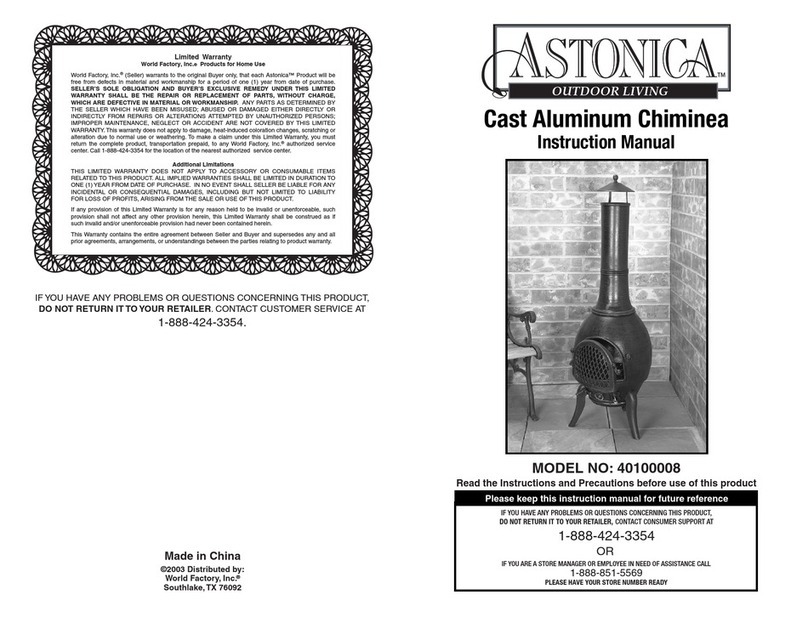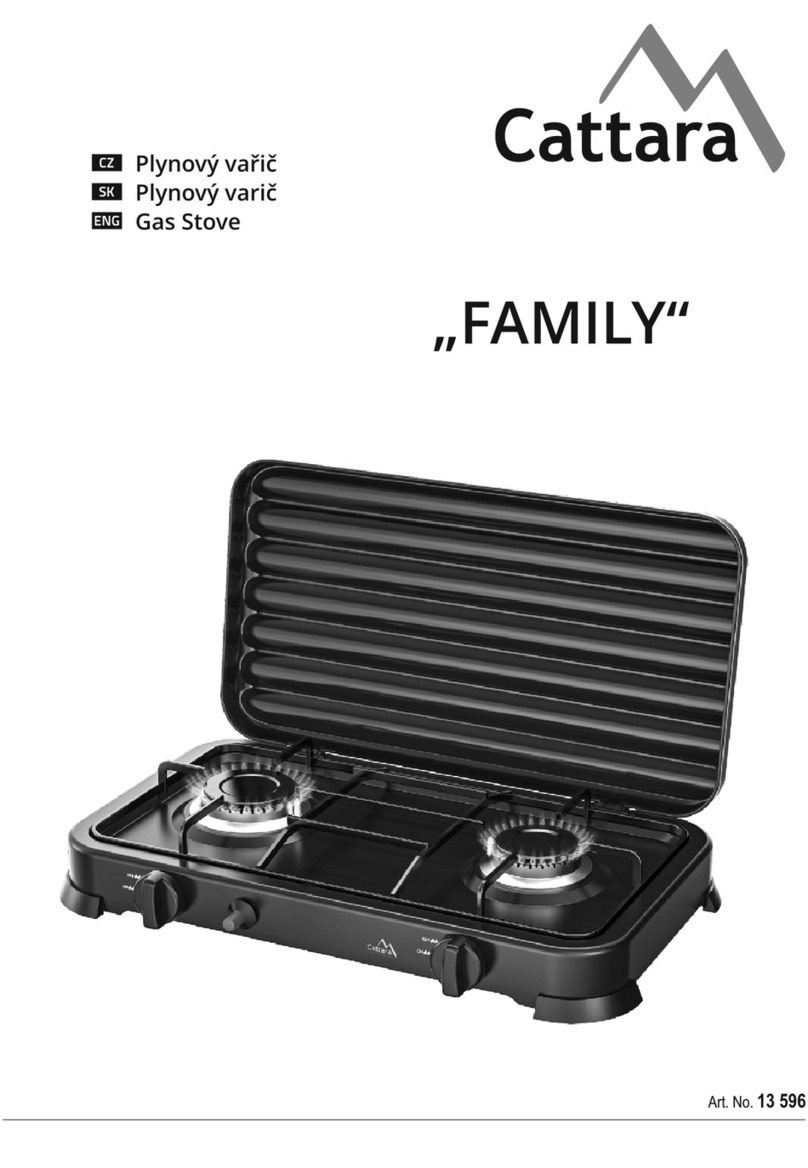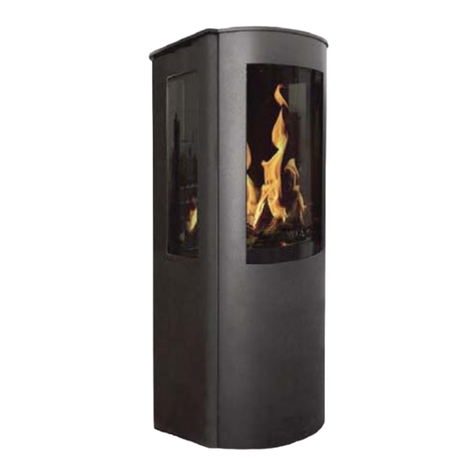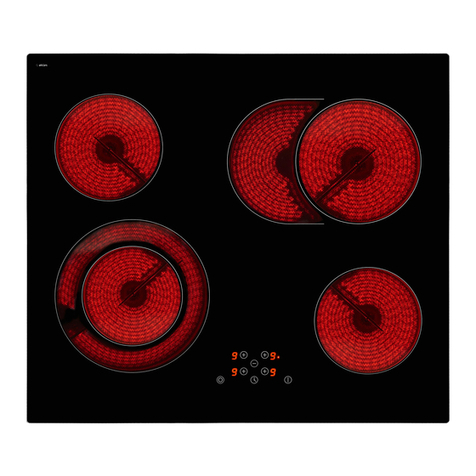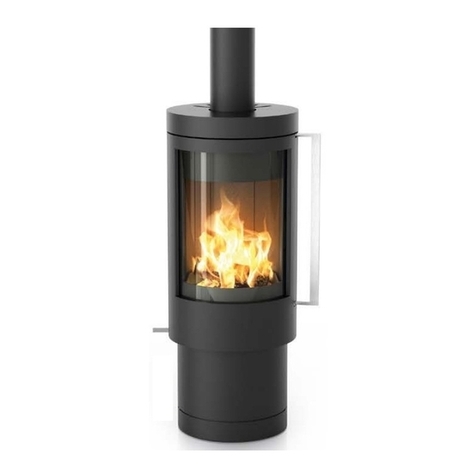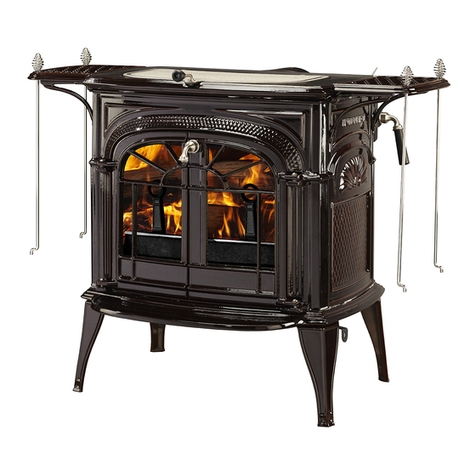Page 4
CAUTION! CHILDREN PLAYING!
The appliance becomes very hot when it is in operation. Make sure that child-
ren are never in the immediate vicinity of the appliance when it is in use.
CORRECT INSTALLATION AND START-UP
The safety of the appliance can only be assured if it has been installed by a trai-
ned technician, in compliance with the standards and regulations applicable at
the place of installation. Make sure that the requirements of the applicable laws
and standards as well as the local fire protection laws and building regulations
are adhered to. Please consult the local qualified chimney sweep regarding the
assessment of building and technical conditions.
When operating the stove, make sure that there is an adequate supply of fresh
air in the room where the appliance is located. An air exchange of at least 0.8
times per hour by means of a permanent and secure ventilation of the room
must be ensured. If the windows and doors are tightly sealed or if other ap-
pliances such as extractor hoods, tumble driers, ventilators etc. draw air from
the room where the appliance is located, it may be necessary to provide fresh
combustion air from outside. The inlet apertures for combustion air must not
be closed.
For the first 2 to 3 days run the stove with a low output. This allows the stove
lining to dry out slowly and as a result it extends the service life significantly.
During the first few days of operation, expansion cracks may form in the fire-
clay-cladding. However, this does not impair the functioning of the appliance.
CORRECT OPERATION
Correct operation, in compliance with the installation instructions and with the
operating manual as well as with the instructions regarding safety and environ-
mental protection.
Bear in mind that the appliance is not childproof (doors, etc.) and therefore it
must not be operated by children or other people who are not authorised or
trained.
If the appliance is not installed properly and if the instructions (as stated in
the technical documentation and operating manual) regarding the start-up and
operation of the appliance are not followed, all warranty claims will become
null and void.
Open the start-up flap only when heating up the stove, keep the combustion
chamber door and ash door closed at all times. Avoid overheating the stove
(e.g. red-hot steel hotplate). The warranty does not cover any resulting damage.
Only use suitable fuels by choosing environmentally sustainable, high-quality
and dry fuels (see fuels on page 17).
Only operate our central heating stoves using a return flow temperature boost
(thermal valve, motor-driven mixing valve). Faults caused by failure to follow
this instruction are excluded from the warranty cover.
CHIMNEY REQUIREMENTS FOR HEATING SYSTEMS
Before starting up the appliance for the first time, the local qualified chimney
sweep must certify the suitability and readiness for operation of new or existing
chimneys by a declaration of conformity.
The owner must ensure that the chimney is free of obstructions (no coverings
or blockages). Please point out existing faults and /or alterations in the chim-
ney and the heating system. Because of low exhaust gas temperatures when
the seasons change the chimney must be leak-free and humidity-resistant.
Make sure that flue and exhaust gas can escape freely to the outside.
REGULAR CLEANING AND MAINTENANCE
To ensure the functionality and efficiency of the appliance, regular maintenance
and cleaning work must be carried out on every fireplace and all the connec-
ted system components (e.g. chimney, connecting ducts, etc.). Please observe
the instructions regarding maintenance and cleaning in this operating manual.
Your chimney sweep will also be happy to clean the fireplace. Only clean and
properly adjusted appliances work efficiently.


